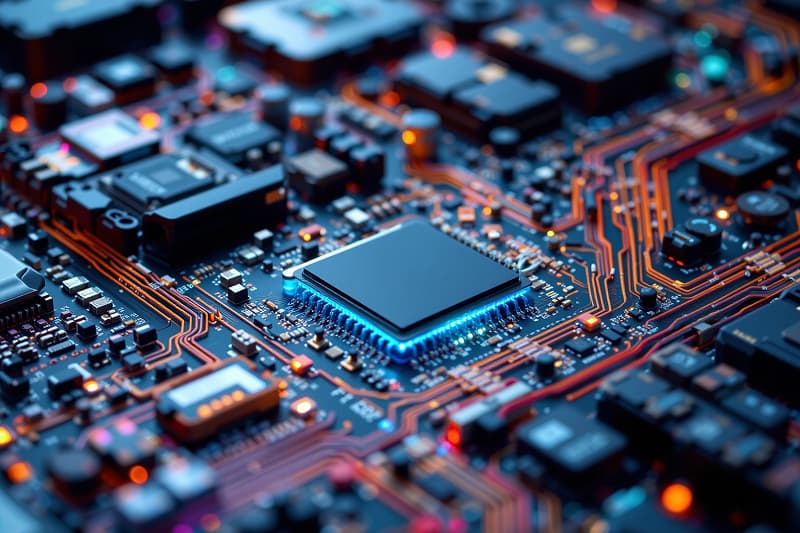Qualcomm surprised the markets this week by announcing two new data-centre-grade AI chips—AI200 and AI250—scheduled for 2026 and 2027. The news sent its share price soaring by double-digits as investors interpreted the move as a bold leap into the red-hot AI infrastructure space. With smartphones no longer the growth engine they once were, Qualcomm’s pivot could reshape its future—and the broader chip industry.
From Smartphones to Smart Systems
Qualcomm has long been known for its dominance in mobile modem and application-processor chips. But in recent years the smartphone market has matured and competition has increased (for instance, from in-house Apple chips and fewer handset upgrades). Analysts have pointed out that Qualcomm needs to diversify to sustain growth.
Over the past year, the company has been growing its non-handset businesses: automotive, Internet of Things (IoT) and licensing. For example, its Q3 2025 results showed revenue up about 10% year-on-year, with gains in IoT (+24%) and automotive (+21%).
Thus, the stage was set for a strategic pivot—and it has now arrived.
Inside the Announcement: New AI200 and AI250 Chips
- The new chips, named AI200 (for release in 2026) and AI250 (for 2027), are designed for inference workloads in data centres and support major AI frameworks.
- Qualcomm emphasised cost-efficiency and memory capacity in the chips, positioning them to compete with market leader Nvidia Corporation.
- Alongside the chips, Qualcomm announced server-rack offerings and revealed a deployment deal with Saudi-backed AI startup Humain that will use 200 megawatts of its AI infrastructure starting in 2026.
- The share price reacted accordingly, rising as much as ~20% on the announcement
Breaking Down the Tech: What Makes These Chips Different
Think of data-centre AI chips like high-performance engines powering apps such as chatbots, image generators, and recommendation systems. Qualcomm, which historically built chips for phones, is now building “engines” and even “engine rooms” (server racks) for AI. The AI200/AI250 chips bring more memory, specialised neural-processing units, and cost efficiencies.
If smartphones were “sports cars,” then AI data centres are “freight trains”: big, heavy workloads that need lots of horsepower and endurance. Qualcomm is building the engine for the freight train now.
Implications
- For investors: Three things matter — growth beyond smartphones, margin improvement in high-end segments, and successful execution of the data centre play. The market is rewarding the diversification.
- For the industry: Qualcomm’s entry intensifies rivalry in the AI infrastructure space, which has been dominated by Nvidia. More competition could drive innovation and possibly lower costs for cloud-services and enterprises.
- For the user/consumer: While most people won’t directly use these chips, the ripple effect could be seen in cheaper AI-powered services, smarter cars (Qualcomm’s automotive business), and broader connectivity.
- For the geography/India angle: Qualcomm has already been pushing localization and automotive modules in India, aiming to double its auto revenue by 2029. Hence, global supply-chain and regional manufacturing implications are noteworthy.
Looking Forward: What to Watch Next
If Qualcomm executes well, the upcoming 12-to-24-month period could see growth inflection points: early design wins, first commercial deployments of AI200 in 2026, and automotive/IoT revenue expansion. Analysts are already pointing to upside to ~$190-$200 per share in medium term.
Meanwhile, watch for quarterly updates, customer agreements in the data centre space, and margin trends in non-handset segments. Regulatory factors and global chip-supply geopolitics also merit close attention.
A Defining Moment for Qualcomm’s Evolution
Qualcomm’s bold step into data centre-grade AI chips marks a meaningful shift away from its handset-centric past. It’s a bet on new growth engines—automotive, IoT and especially AI infrastructure. While the risks are real, the reward could reshape Qualcomm’s trajectory. For anyone tracking the semiconductor ecosystem, this development is more than a headline—it could be a turning point. Keep your eyes on whether the promise turns into tangible wins.
